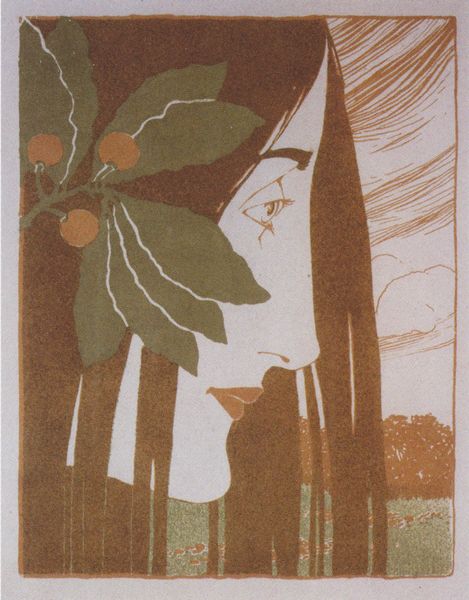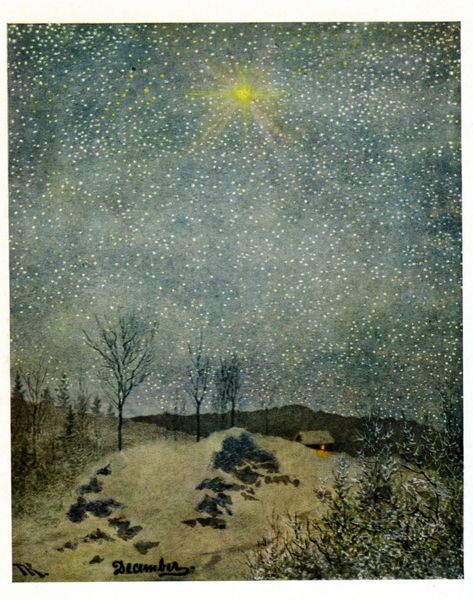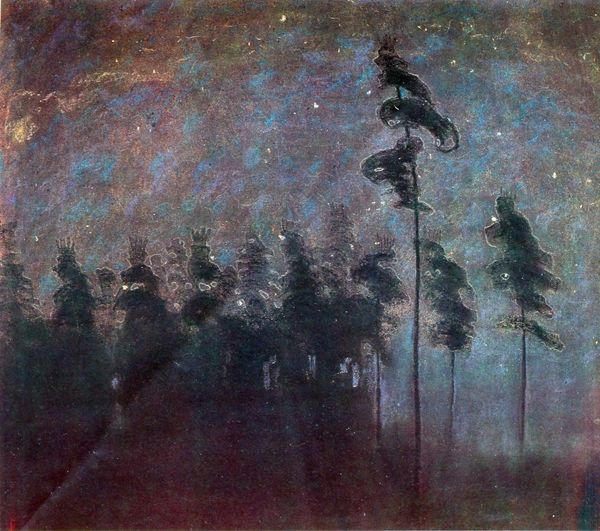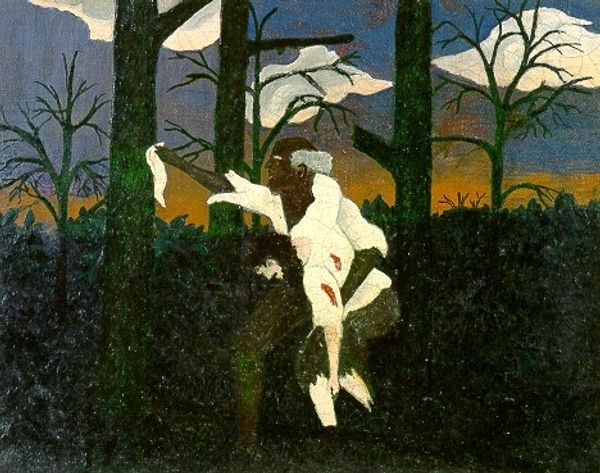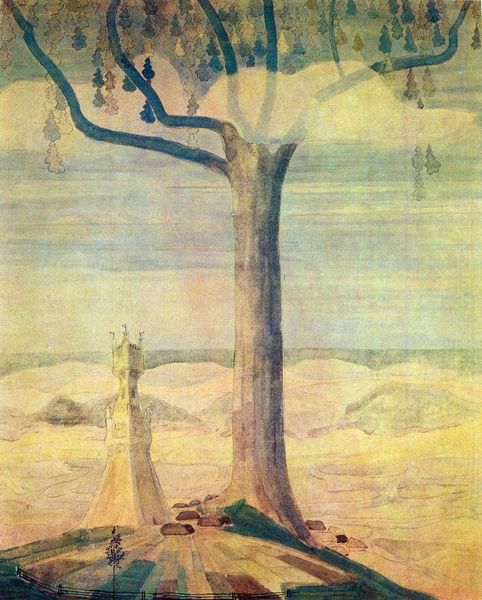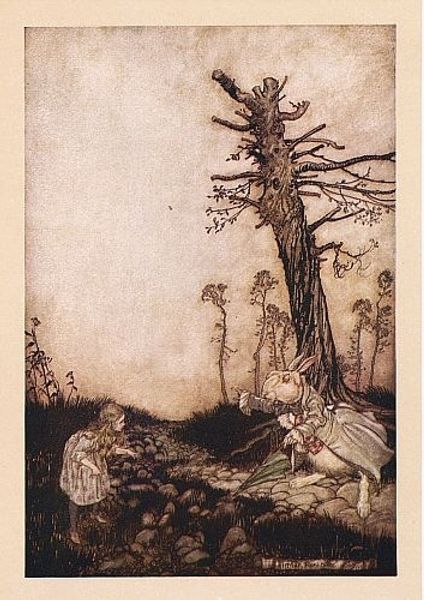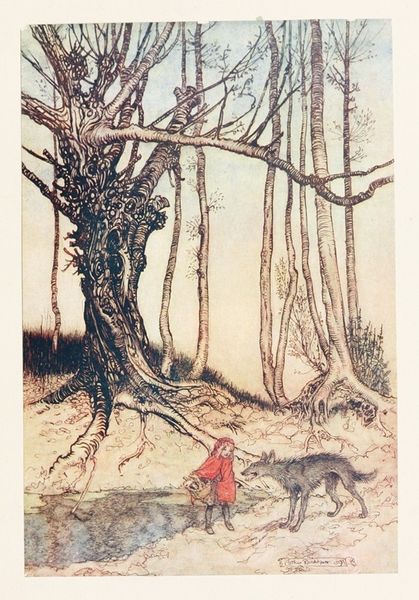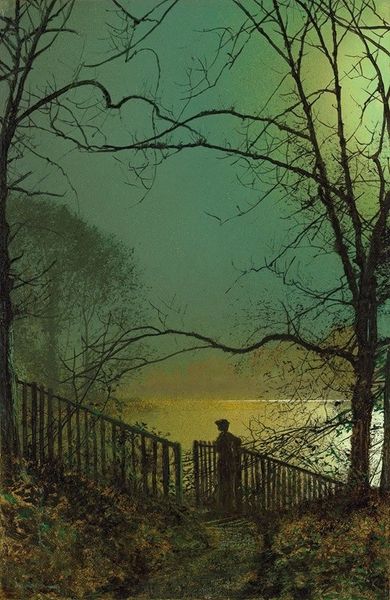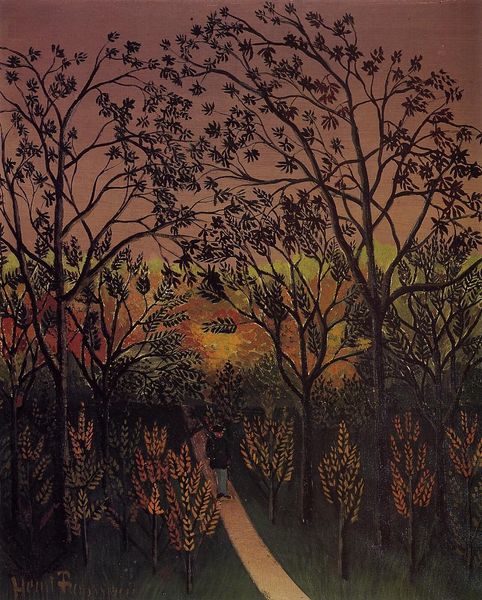
Copyright: Public domain
Henri Rousseau painted "Carnival Evening" with oil on canvas in an uncertain year, sometime before his death in 1910. Rousseau, a self-taught artist, often depicted dreamlike scenes, reflecting his own imaginative world. In this work, the figures in Pierrot and Columbine costumes, characters from the Italian commedia dell'arte, stand out against a mysterious nocturnal landscape. Carnival, a festival of role reversal, provided a space where social norms could be playfully subverted. The painting evokes a sense of quiet melancholy. The stark, leafless trees and the eerie moonlight create a somber backdrop, contrasting with the festive attire of the figures. It suggests a world where revelry is tempered by introspection. Rousseau developed an alternative narrative, transforming the traditional symbolism associated with costume into a scene of personal reflection. "Carnival Evening" quietly captures the personal emotions of identity and experience in the broader societal landscape of early 20th-century France.
Comments
No comments
Be the first to comment and join the conversation on the ultimate creative platform.

